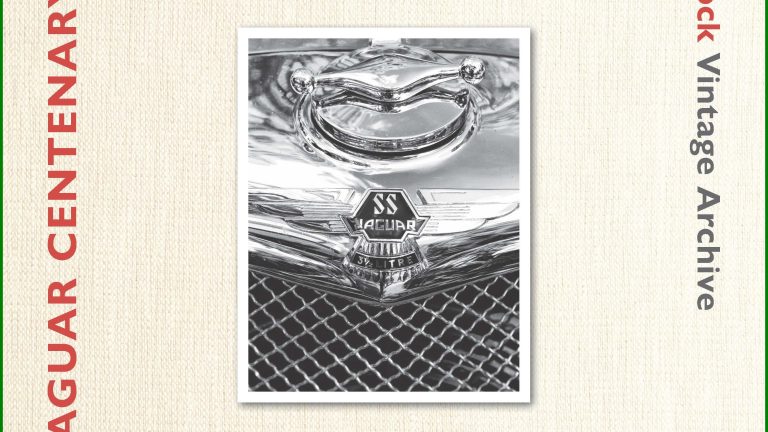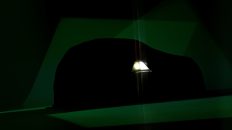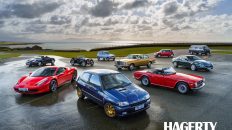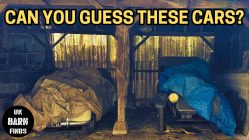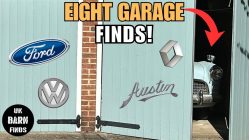New paperback and digital, Eric Dymock’s Vintage Archive Centenary Jaguar Book One is published this week.
First of a tribute trilogy, from SS and XK to the inception of XKSS, it details wins at Le Mans and reveals secretly supported private teams. With XK engines in sports cars and Mark VIIs, shareholders were content, the brand was flourishing.
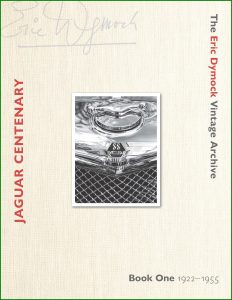 Eric Dymock chronicled Jaguar for 60 of its 100 years. The book opens on creator Bill Lyons’ 21st birthday, entitling him to sign cheques for a fledgling partnership. Its 156 pages carry authentic period as well as new colour pictures, together with specifications from the first Swallow motorcycle sidecars made in Blackpool, through Austin Seven Swallows, the first cars. Bertie Henly and Frank Hough drove a hard bargain with Lyons, 25 per cent against a customary 17½ markup, to sell from classy Devonshire House, Piccadilly.
Eric Dymock chronicled Jaguar for 60 of its 100 years. The book opens on creator Bill Lyons’ 21st birthday, entitling him to sign cheques for a fledgling partnership. Its 156 pages carry authentic period as well as new colour pictures, together with specifications from the first Swallow motorcycle sidecars made in Blackpool, through Austin Seven Swallows, the first cars. Bertie Henly and Frank Hough drove a hard bargain with Lyons, 25 per cent against a customary 17½ markup, to sell from classy Devonshire House, Piccadilly.
With a substantial order book Swallow outgrew its shabby modest Blackpool premises. “…it took a day to varnish bodywork and there was not enough factory space to line up 12 cars and watch their paint dry.” Lyons set off for the motor industry heart, Coventry, and aged 28 negotiated a lease on a WW1 munitions factory, “For £1200 a year with an ambitious option to purchase. It was signed up on 8 October 1928 and the Blackpool employees joined in. Less than a year later … took out a mortgage on 80,000 square feet for £18,000 with the Coventry Permanent Building Society. Following the Wall Street Crash a month later it looked like bravura.”
Another reason for Coventry was Standard Motor Company. Captain John Paul Black (1895-1965) had just taken charge and had, “… machinery to make engines and chassis frames but no premium-priced model of its own, Black privately believed in due course he would be able to buy the newer, smaller Swallow for himself.” There was more. “From 1931 Standard began supplying unique framework for the 6-cylinder SS1 and 4-cylinder SS2, including a lowered chassis frame it never used itself. The 6-cylinder engine had a strong seven main bearing crankshaft that became the basis of SS and Jaguar cars for years.”
The Brooklands set of the 1930s thought SS Jaguars infra dig with a feeble engine under an imposing bonnet. But the SS100 and the 1938 SS100 Coupe prototype at the new Earls Court motor show changed that. By the 1940s a classic marque with Grace Pace and Space, Jaguar was a symbol of speed and style. XK120s and 140s became pre-eminent, C and D-types prized by collectors. Book One takes us to the middle 1950s, Jaguar riding the crest of a wave with Mark V and Mark VII, Bill Lyons about to become Sir William.
Eric Dymock tested Jaguars on road and track, followed their fortunes in specialist magazines and syndicated features. His 1950s associations with Ecurie Ecosse and Scottish racing driver Jimmy Stewart earned him good connections at Jaguar with FRW “Lofty” England and Jaguar PRs Bob Berry, as well as Andrew JA Whyte to whose memory this book is dedicated. Jaguars featured during Dymock’s 13 years as Motoring Correspondent of The Sunday Times, leading to his three editions of The Jaguar File, with Dove Publishing Ltd beginning in 1999. Their model-by-model detail and narrative history led to Jaguar confidently distributing them to journalists, and Head of Design Ian Callum recommending their accuracy.
On Amazon as paperback and ebook. ISBN 978-1-9993647-2-4.
https://www.amazon.co.uk/Jaguar-Centenary-Book-One-1922-1955/dp/1999364724
https://www.amazon.co.uk/Jaguar-Centenary-1922-1955-Vintage-Archive- ebook/dp/B09KFW5BQ9

